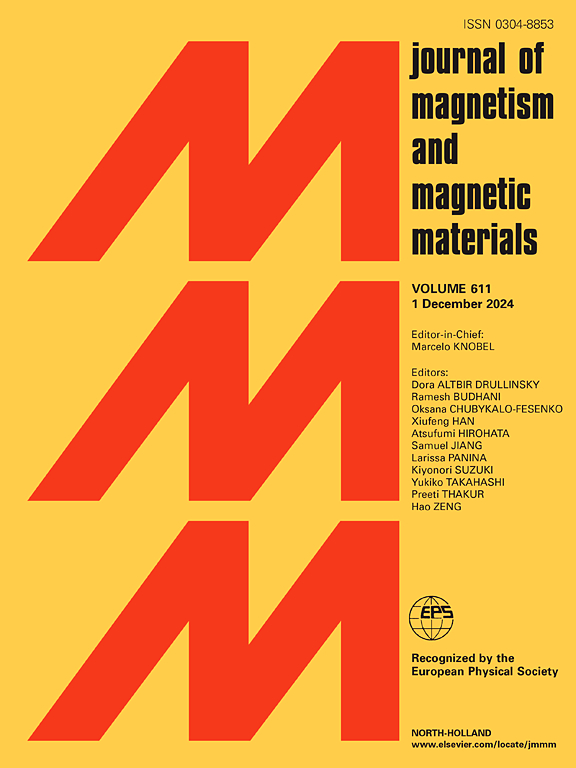Modeling magnetic separation of metal ions in aqueous solutions
IF 2.5
3区 材料科学
Q3 MATERIALS SCIENCE, MULTIDISCIPLINARY
引用次数: 0
Abstract
Although the techniques for the magnetic separation of large (micrometer size) ferromagnetic and paramagnetic particles are well developed and commercially used on a large scale, the magnetic separation of nanoparticles is not well studied. In this article, we develop a mathematical model to describe the transport of small paramagnetic and diamagnetic particles in liquids under a non-uniform magnetic field. Special emphasis is given to thermal diffusion, which is shown to play an important role in the transport of nanoparticles. The model describes the magnetic particles and the solvent as two interpenetrating continua: the magnetic particle continuum, which interacts with the external magnetic field, lacks inertia, and moves through the solvent while experiencing a force of resistance from the solvent; and the solvent continuum which is assumed non-magnetic and inert. The two continua are described using the Navier-Stokes and drift–diffusion equations, respectively. Using our model, we analyze the effects of drag, gravitation, thermal diffusion and magnetophoresis on the dynamics of the particles and look at the conditions under which these phenomena dominate their transport properties. The model is in good qualitative agreement with experiments published in the literature.
求助全文
约1分钟内获得全文
求助全文
来源期刊

Journal of Magnetism and Magnetic Materials
物理-材料科学:综合
CiteScore
5.30
自引率
11.10%
发文量
1149
审稿时长
59 days
期刊介绍:
The Journal of Magnetism and Magnetic Materials provides an important forum for the disclosure and discussion of original contributions covering the whole spectrum of topics, from basic magnetism to the technology and applications of magnetic materials. The journal encourages greater interaction between the basic and applied sub-disciplines of magnetism with comprehensive review articles, in addition to full-length contributions. In addition, other categories of contributions are welcome, including Critical Focused issues, Current Perspectives and Outreach to the General Public.
Main Categories:
Full-length articles:
Technically original research documents that report results of value to the communities that comprise the journal audience. The link between chemical, structural and microstructural properties on the one hand and magnetic properties on the other hand are encouraged.
In addition to general topics covering all areas of magnetism and magnetic materials, the full-length articles also include three sub-sections, focusing on Nanomagnetism, Spintronics and Applications.
The sub-section on Nanomagnetism contains articles on magnetic nanoparticles, nanowires, thin films, 2D materials and other nanoscale magnetic materials and their applications.
The sub-section on Spintronics contains articles on magnetoresistance, magnetoimpedance, magneto-optical phenomena, Micro-Electro-Mechanical Systems (MEMS), and other topics related to spin current control and magneto-transport phenomena. The sub-section on Applications display papers that focus on applications of magnetic materials. The applications need to show a connection to magnetism.
Review articles:
Review articles organize, clarify, and summarize existing major works in the areas covered by the Journal and provide comprehensive citations to the full spectrum of relevant literature.
 求助内容:
求助内容: 应助结果提醒方式:
应助结果提醒方式:


